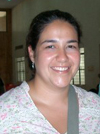
|
|
Technology’s Role in Disaster Relief
While Matthew Walker focuses his investigative lense on the key role of community technology centers in providing post-hurricane assistance, other techie minded folks have been using technology tools to help the recovery efforts in all sorts of other ways. The immediacy of emergency community radio and ad hoc WIFI networks have provided crucial communication services—witness Nicole Friedman’s article on the Chicago's Neighborhood Technology Center's Wireless Community Network Project volunteers going to Louisiana , as well as other professionals referenced in the Associated Press article on "Geek cavalries turn post-Katrina landscape into wireless lab". Here at the Review, we tried to keep an eye on some of the other technology studded highlights in the recovery efforts below. In the wake of the disaster, multiple websites emerged to help evacuees find their family and friends (e.g., the Katrina PeopleFinder Project) and obtain relief services—federal assistance benefits, health, and housing (University of Michigan School of Information’s KatrinaHousing.net). Meta-sites like Katrina Help Wiki and Recovery 2.0 have grouped online resources for easier searching. Volunteer Today created a series of links to serve those trying to manage the influx of offers to help. NTEN is partnering with HumaniNet to convene a conference this month in Washington D.C. on the use of information and communications technologies (ICT) in humanitarian relief operations and post-crisis development on an international scale. In turn, the Resource Center of the Corporation for National and Community Service, in cooperation with Project TAHS—Technical Assistance in Homeland Security, compiled a comprehensive set of informational links to resources such as volunteer management, disaster response and recovery, and health, safety, and illness prevention, to support the over 5,700 AmeriCorps and Senior Corps members that joined relief efforts. Communications policy issues have come to the forefront as volunteers have tried to establish low power and HAM radio communications and wireless access in the Gulf states, challenging current FCC rules and prompting the ongoing need to review how the government regulates radio and telecommunications. The National Journal's Insider Update has run a series of articles on Katrina's impact on telecommunications policy and what needs to be done to rebuild infrastructure and prepare for future disasters. Technology tools have been key in addressing the policies underlying the federal response to the disaster. OMB Watch's reaction is a good case in point. In early September they issued a statement about federal responsiveness to the emergency and asked readers for comments on the position. From this, they posted an assessment of the Administration's relief/rebuilding efforts and an outline for more general disaster relief, tentatively called the Domestic Security Initiative. They created an online survey to gather readers’ viewpoints and issued an action alert calling on the EPA to be forthcoming about the environmental dangers left in Katrina's wake. The alert provides a draft, editable message to EPA Administrator Stephen Johnson. This kind of responsiveness that seeks to tap into and build upon constituent interests and understandings would be impossible without the technology support it uses. Any search engine query for “Katrina Help” will yield thousands of hits, many of which are directly tied to technology tools. As American’s spoke out in shock in the media and on the Internet, technology played a keen role in empowering many people to help in more ways then just giving financially. The long lasting impact of community media and technology’s quick and effective responses will play out in new governmental efforts to be more prepared for disaster, with emerging technologies in the forefront.  Hyperlinks references in this article: Comments
|